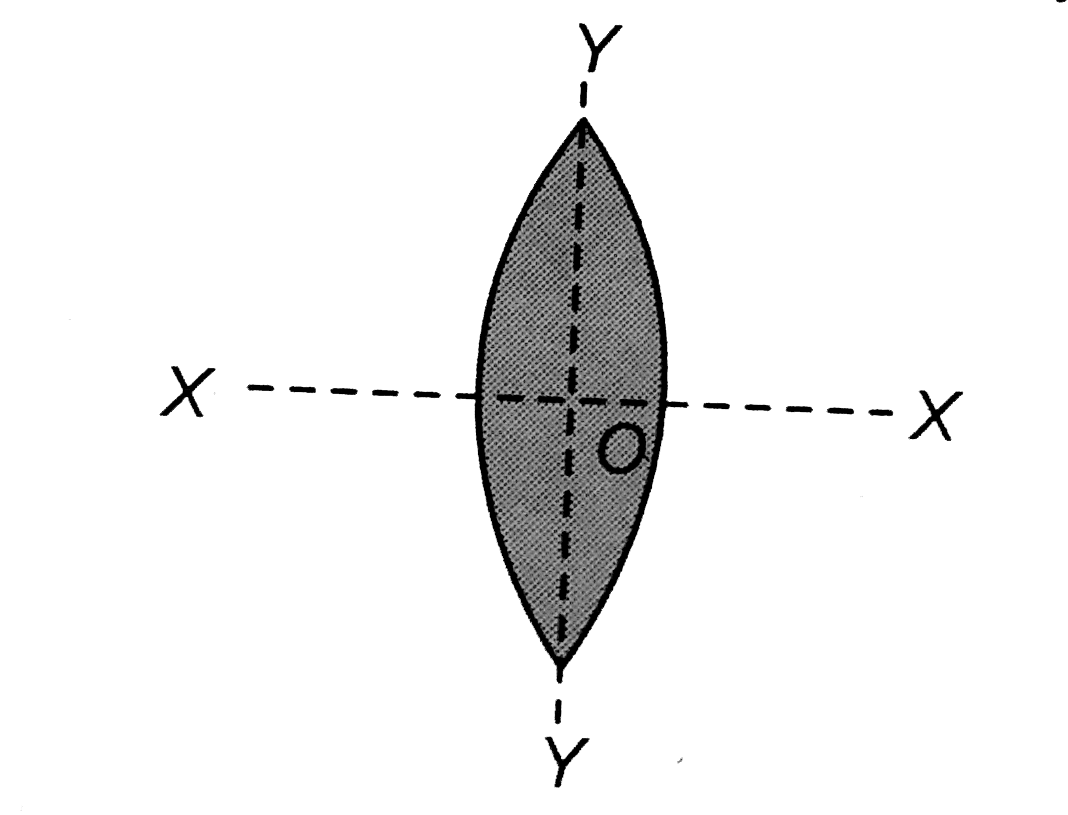The focal length of a converting lens are fvandfr for violet and red lights, respectively. Which of the following is correct?
fv<Fr
fv=Fr
fv>Fr
It depends on the average refractive index
The correct Answer is:A
To solve the question regarding the focal lengths fv and fr of a converging lens for violet and red lights respectively, we can follow these steps:
Step 1: Understand the Relationship Between Focal Length and Refractive Index
The focal length f of a lens is related to the refractive index μ of the material of the lens and the radii of curvature R1 and R2 of the lens surfaces by the lens maker's formula:
1f=(μ−1)(1R1−1R2)
Here, μ is the refractive index of the lens material for the specific wavelength of light.
Step 2: Compare the Refractive Indices of Violet and Red Light
The refractive index of a material generally increases as the wavelength of light decreases. Therefore, for violet light (which has a shorter wavelength) the refractive index μv is greater than that for red light μr:
μv>μr
Step 3: Analyze the Effect on Focal Length
From the lens maker's formula, since μv>μr, it follows that:
1fv=(μv−1)(1R1−1R2)
1fr=(μr−1)(1R1−1R2)
Since μv>μr, it implies that fv<fr. This means that the focal length for violet light is less than that for red light.
Step 4: Conclusion
Thus, the correct relationship is:
fv<fr
Final Answer
The focal length of the converging lens for violet light fv is less than that for red light fr.
---
The focal length f of a lens is related to the refractive index μ of the material of the lens and the radii of curvature R1 and R2 of the lens surfaces by the lens maker's formula:
1f=(μ−1)(1R1−1R2)
Here, μ is the refractive index of the lens material for the specific wavelength of light.
The refractive index of a material generally increases as the wavelength of light decreases. Therefore, for violet light (which has a shorter wavelength) the refractive index μv is greater than that for red light μr:
μv>μr
From the lens maker's formula, since μv>μr, it follows that:
1fv=(μv−1)(1R1−1R2)
1fr=(μr−1)(1R1−1R2)
Since μv>μr, it implies that fv<fr. This means that the focal length for violet light is less than that for red light.
Thus, the correct relationship is:
fv<fr
The focal length of the converging lens for violet light fv is less than that for red light fr.
Topper's Solved these Questions
- RAY OPTICSBook:DC PANDEY ENGLISHChapter:RAY OPTICSExercise:medical entrance special format question
Explore 23 Videos
- NUCLEIBook:DC PANDEY ENGLISHChapter:NUCLEIExercise:C MADICAL ENTRANCES GALLERY
Explore 46 Videos
- REFLECTION OF LIGHTBook:DC PANDEY ENGLISHChapter:REFLECTION OF LIGHTExercise:Subjective
Explore 9 Videos
Similar Questions
The focal length ofa converging lens are fvandfr for violet and red light respectively.
View SolutionIf f(V) and fR are the focal lengths of a convex lens for violet and red light respectively and FVand FR are the focal lengths of concave lens for violet and red light respectively, then we have
View SolutionThe focal lengths of a converging lens measured for violet, green and red colours of fv'fG'fR respectively. We will find
(A). fR>fG>fV (B). fv<fR<fG
(C). fV>fR>fG (D). fV=fR=fG
View SolutionThe focal lengths of a convex lens for red, yellow and violet rays are 100 cm, 98 cm and 96 cm respectively. Find the dispersive power of the material of the lens.
View SolutionAn equiconvex lens is cut into two halves along (i)XOX′ and (ii)YOY′ as shown in the figure. Let f,f′f'' be the focal lengths of the complete lens, of each half in case (i), and of each half in case (ii), respectively
Choose the correct statement from the following

View SolutionThe focal lengths of a thin lens for red and violet light are 90.0 cm and 86.4cm respectively. Find the dispersive power of the material of the lens. Make appropriate assumptions.
View SolutionA thin convex lens has focal length f1 and a concave lens has focal length f2. They are kept in contact. Now, match the following two columns.

View SolutionHow are power and focal length of a lens related ? You are provided with two lenses of focal length 20cm and 40cm respectively. Which lens will you use to obtain more convergent light ?
View SolutionChoose the correct alternative corresponding to the object distance 'u', image distance 'v' and the focal length 'F' of a converging lens from the following .
(i) The average speed of the image as the object moves with the uniform speed from distance 3F4 to F2 is greater than the average speed of the image as the object moves with same speed from distance F2toF4
(ii) The minimum distance between a real object and its real image in case of a converging lens is 4F where F is its focal length.
View SolutionFrequencies of various radiations are given as
fv→ Visible light
fr→ Radio waves
fuv→ Ultra Violet waves
The which of the following is true?
View Solution

